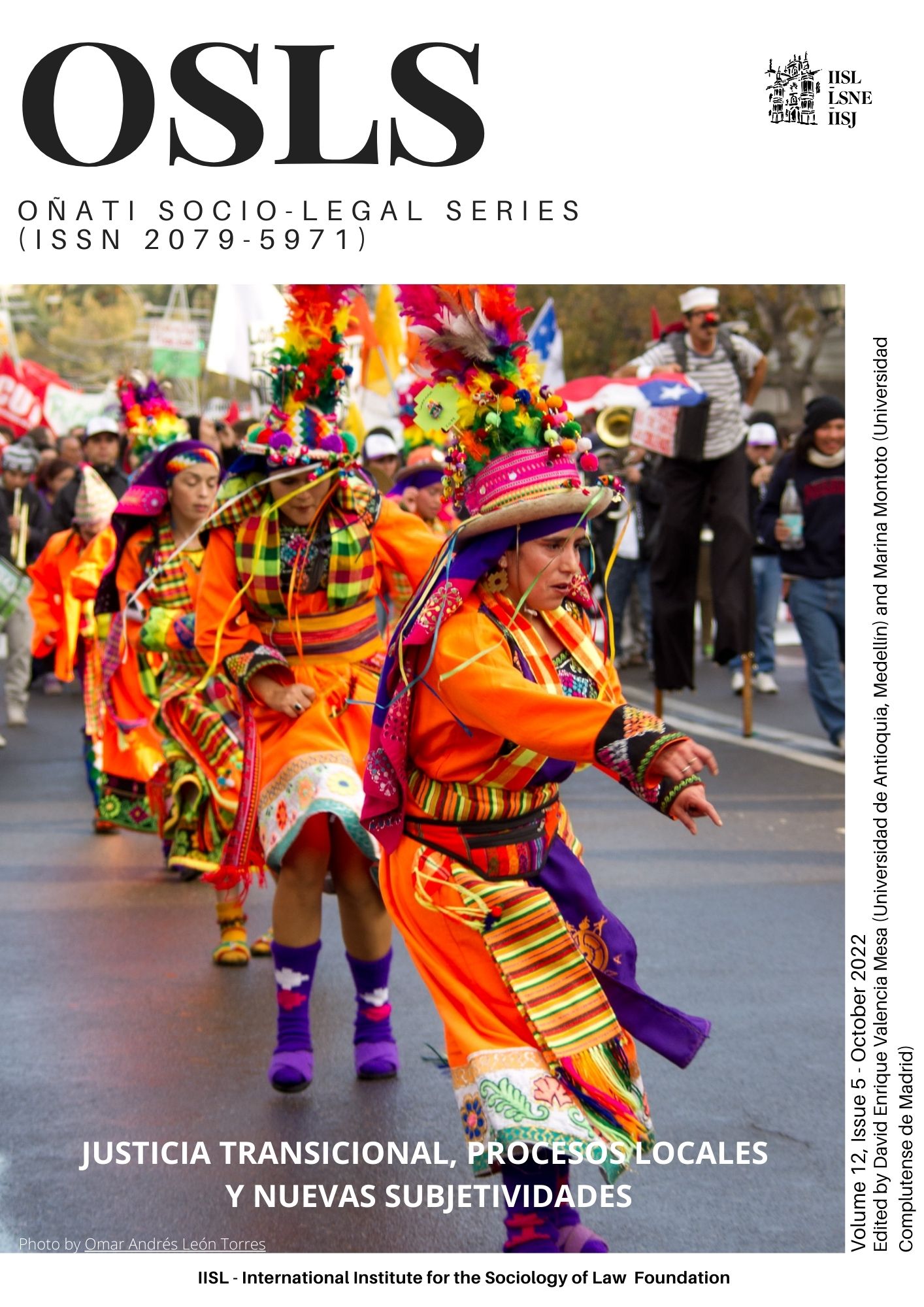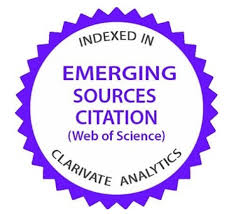The case for legal technique
A tentative map for legal mobilization
DOI:
https://doi.org/10.35295/osls.iisl/0000-0000-0000-1267Palabras clave:
movimientos sociales, transformación de disputas, estrategia de ruptura, movilización jurídica, bienes comunesResumen
De forma aparentemente paradójica o contradictoria, nuestro nuevo siglo parece mostrar dos tendencias: por un lado, una oleada de levantamientos cada vez más informales, desorganizados y, a menudo, violentos; y, por otro lado, una creciente explotación de las estrategias jurídicas. Teniendo en cuenta esta evolución, ¿cómo repensar la relación entre las luchas sociales y el derecho? Este artículo emplea un enfoque casuístico para explorar los modos actuales de interconexión entre el derecho y la sociedad. Sostiene que el derecho es el lenguaje que, a través de la institución de las normas, da forma al mundo de las relaciones sociales. A través de este mismo lenguaje, el derecho realiza acciones en este mundo que instituye a través de sus categorías. Este artículo también propone una comprensión técnica del concepto de movilización jurídica y argumenta que el uso innovador de la técnica jurídica (en lugar de una gramática política) y las instituciones de cooperación social podrían verse como elementos que redescriben y resignifican la movilización jurídica.
Descargas
Metrics
Estadísticas globales ℹ️
|
910
Visualizaciones
|
590
Descargas
|
|
1500
Total
|
|
Citas
Agenzia Stampa CARC, 2019. [Italia] Diario di bordo: alla scoperta del Movimento NO TAP. CARC [online], 6 January. Available from: https://www.carc.it/2019/01/06/italia-diario-di-bordo-alla-scoperta-del-movimento-no-tap/ [Accessed 26 January 2022].
Amendola, A., 2016. Costituzioni precarie. Rome: Manifestolibri.
Bailey, S., and Mattei, U., 2013. Social Movements as Constituent Power: The Italian Struggle for the Commons. Indiana Journal of Global Legal Studies, 20(2), 965–1013. DOI: https://doi.org/10.2979/indjglolegstu.20.2.965
Barkan, S., 2003. Criminal Prosecution and Trial: A Neglected Dynamic in The Study of Law and Social Movements. Paper submitted for presentation at the annual meeting of the American Sociological Association, Atlanta. 16 August.
Barzilai, G., 2007. The Ambivalent Language of Lawyers in Israel. In: T.C. Halliday, L. Karpik and M.M. Feeley, eds., Fighting for Political Freedom. Oxford: Hart, Oñati International Series in Law and Society, 247–277.
Bhandar, B., 2012. Strategies of Legal Rupture: The Politics of Judgment. Windsor Yearbook of Access to Justice [online], 30(2), 59–78. Available from: https://doi.org/10.22329/wyaj.v30i2.4369 [Accessed 26 January 2022]. DOI: https://doi.org/10.22329/wyaj.v30i2.4369
Cesarini Sforza, W., (with M. Spanò, ed.), 2018. Il diritto dei privati. Macerata: Quodlibet.
Chatterjee, P., 2004. The Politics of the Governed: Reflections on Popular Politics in Most of the World. New York: Columbia University Press.
Chiaramonte, X., 2012. Un caso di disgregazione creativa: La corte di cassazione sul matrimonio omosessuale. Sociologia del diritto, 2, 151–158. DOI: https://doi.org/10.3280/SD2012-002008
Chiaramonte, X., 2018. Social movements and the legal field: Becoming-Constituent. Max Planck Yearbook of United Nations Law [online], 22(1), 376–393. Available from: https://doi.org/10.1163/18757413_022001015 [Accessed 12 November 2021]. DOI: https://doi.org/10.1163/18757413_022001015
Chiaramonte, X., 2019. Governare il conflitto: La criminalizzazione del movimento No Tav. Milan: Meltemi.
Chiaramonte, X., 2020. The struggle for law: legal strategies, environmental struggles and climate actions in Italy. Oñati Socio-Legal Series [online], 10(4), 932–954. Available from: https://doi.org/10.35295/osls.iisl/0000-0000-0000-1153 [Accessed 26 January 2022]. DOI: https://doi.org/10.35295/osls.iisl/0000-0000-0000-1153
Chiaramonte, X., and Senaldi, A., eds., 2018. Violenza politica: Una ridefinizione del concetto oltre la depoliticizzazione. Milan: Ledizioni.
Christodoulidis, E., 2009. Strategies of Rupture. Law Critique, 20, 3–26. DOI: https://doi.org/10.1007/s10978-008-9042-x
Dardot, P., and Laval, C., 2019. Common: On Revolution in the 21st Century. London: Bloomsbury.
Della Porta, D., and Diani, M., 2006. Social Movements: An Introduction. 2nd ed. Oxford: Blackwell.
Der Spiegel, 2008. “There Is No Such Thing as Absolute Evil”. Der Spiegel [online], 21 November. Available from: https://www.spiegel.de/international/world/interview-with-notorious-lawyer-jacques-verges-there-is-no-such-thing-as-absolute-evil-a-591943.html [Accessed 26 January 2022].
Fiorentino, D., and Chiaramonte, X., 2019. Il caso 7 aprile: Il processo politico dall’Autonomia Operaia ai No Tav. Milan: Mimesis.
Foucault, M., 1981. Préface à la deuxième edition. In: J. Vergès, De la stratégie judiciaire. Paris: Minuit, 5–13. (Now in: Foucault, M., 1994. Dits et écrits 1954–1988 tome 4, texte no. 290. Paris: Gallimard). DOI: https://doi.org/10.14375/NP.9782070738441
Foucault, M., 1983. The Subject and Power. Why Study Power: The Question of the Subject How Is Power Exercised? Critical Inquiry, 8(4), 777–795. DOI: https://doi.org/10.1086/448181
Friedman, L., 1975. The Legal System: A Social Science Perspective. New York City: Russell Sage Foundation.
Halliday, T., Karpik, L., and Feeley, M., 2007. The Legal Complex in Struggles for Political Liberalism. In: T.C. Halliday, L. Karpik and M.M. Feeley, eds., Fighting for Political Freedom. Oxford: Hart, Oñati International Series in Law and Society, 1–40.
Klein, N., 2001. Reclaiming the Commons. New Left Review [online], 9 (May-June). Available from: https://newleftreview.org/issues/ii9/articles/naomi-klein-reclaiming-the-commons [Accessed 26 January 2022].
Lehoucq, E., and Taylor, W. 2020. Conceptualizing Legal Mobilization: How Should We Understand the Deployment of Legal Strategies? Law & Social Inquiry, 45(1), 166–193. DOI: https://doi.org/10.1017/lsi.2019.59
Marella, M.R., ed., 2012. Oltre il pubblico e il privato: Per un diritto dei beni comuni. Verona: Ombre Corte.
Mather, L., and Yngvesson, B., 1980–81. Language, Audience and the Transformation of Disputes. Law & Society Review, 15(3–4), 775–822. DOI: https://doi.org/10.2307/3053512
McAdam, D., 1982. Political Process and the Development of Black Insurgency, 1930–1970. University of Chicago Press.
McCammon, H.J., and McGrath, A.R., 2015. Litigating Change? Social Movements and the Court System. Sociology Compass, 9(2), 128–139. DOI: https://doi.org/10.1111/soc4.12243
McCann, M., 2006. Law and Social Movements: Contemporary Perspectives. Annual Review of Law and Social Science, 2(17–38), 29–31. DOI: https://doi.org/10.1146/annurev.lawsocsci.2.081805.105917
Melucci, A., 1982. L’invenzione del presente: Movimenti, identità, bisogni individuali. Bologna: Il Mulino.
Merry, S.E., 1990. Getting Justice and Getting Even: Legal Consciousness among Working-Class Americans. University of Chicago Press.
Milner, N., 1987. The Right to Refuse Treatment: Four Case Studies of Legal Mobilization. Law & Society Review, 21(3), 447–85. DOI: https://doi.org/10.2307/3053378
Napoli, P., 2015. Il Comune: un’appartenenza non proprietaria. Alfabeta2 [online], 25 April. Available from: https://www.alfabeta2.it/2015/04/25/il-comune-unappartenenza-non-proprietaria/ [Accessed 26 January 2022].
NeJaime, D., 2013. Constitutional Change, Courts, and Social Movements. Michigan Law Review [online], 111, 6(4), 877–902. Available from: https://repository.law.umich.edu/mlr/vol111/iss6/4/ [Accessed 26 January 2022].
Rajagopal, B., 2005. Limits of law in counter-hegemonic globalization: the Indian Supreme Court and the Narmada Valley struggle. In: B.S. Santos and C.A. Rodríguez-Garavito, eds., Law and Globalization from Below: Towards a Cosmopolitan Legality [online]. Cambridge University Press, 183–217. Available from: https://doi.org/10.1017/CBO9780511494093.008 [Accessed 26 January 2022]. DOI: https://doi.org/10.1017/CBO9780511494093.008
Rebughini, P., 2011. Violenza e spazio urbano: Rappresentazioni e significati della violenza nella città contemporanea. Milan: Guerini.
Romano, S. (with M. Croce, ed.), 2018. L’ordinamento giuridico. Macerata: Quodlibet.
Sarat, A., and Scheingold, S., 2006. Cause Lawyering and Social Movements. Stanford University Press. DOI: https://doi.org/10.1515/9780804767965
Shapiro, M., 1980. Courts: A Comparative and Political Analysis. University of Chicago Press. DOI: https://doi.org/10.7208/chicago/9780226161341.001.0001
Spanò, M., 2013. Istituire i beni comuni: Una prospettiva filosofico-giuridica. Politica & Società, 3, 427–448.
Spanò, M., 2017. La normatività dei governati. Un tracciato post-coloniale. Scienza & Política [online], 29(57), 247–269. Available from: https://doi.org/10.6092/issn.1825-9618/7563 [Accessed 26 January 2022].
Spanò, M., 2020. “Perché non rendi poi quel che prometti allor?” Tecniche e ideologie della giuridificazione della natura. In: Y. Thomas and J. Chiffoleau (with M. Spanò, ed.), L’istituzione della natura. Macerata: Quodlibet.
Terror’s Advocate, 2007. Film. Directed by Barbet Schroeder. France: La Sofica Uni Etoile 3 et al.
Thomas, Y., 2005. L’extrême et l’ordinaire: Remarques sur le cas médiéval de la communauté disparue. In: J. Passeron and J. Revel, eds., Penser par cas [online]. Paris: EHESS. Available from: https://doi.org/10.4000/books.editionsehess.19926 [Accessed 26 January 2022]. DOI: https://doi.org/10.4000/books.editionsehess.19926
Tilly, C., 1978. From Mobilization to Revolution. Reading: Addison-Wesley.
Tilly, C., 2015. Popular Contention in Great Britain, 1758–1834. Abingdon: Routledge. DOI: https://doi.org/10.4324/9781315632698
Tilly, C., and Tarrow, S., 2006. Contentious Politics. 1st ed. New York: Oxford University Press.
Tomasello, F., 2015. La violenza: Saggio sulle frontiere del político. Castel San Pietro Romano: Manifestolibri.
Touraine, A., 1981. The Voice and the Eye: An Analysis of Social Movements. Cambridge University Press.
Vergès, J., 1968. De la stratégie judiciaire. Paris: Minuit.
Wilderson, F.B., 2011. The vengeance of vertigo: Aphasia and abjection in the political trials of black insurgents. Tensions, 5, 1–41. DOI: https://doi.org/10.25071/1913-5874/37360
Publicado
Cómo citar
Número
Sección
Licencia
Derechos de autor 2022 Xenia Chiaramonte

Esta obra está bajo una licencia internacional Creative Commons Atribución-NoComercial-SinDerivadas 4.0.
Los autores conservan el copyright de sus trabajos, que se publicarán en OSLS bajo una licencia Creative Commons Reconocimiento NoComercial SinObraDerivada. Puede consultar más detalles en: http://es.creativecommons.org/licencia/. Si no está de acuerdo con esta licencia, por favor, póngase en contacto con nosotros.
El autor concede los permisos necesarios para difundir la información bibliográfica del artículo, incluyendo el resumen, y autorizar a otros, incluyendo las bases de datos bibliográficas, de índices y servicios de alerta de contenidos, a copiar y comunicar esta información.
Para más información sobre los permisos para distribuir su artículo en cada fase de la producción, por favor, lea nuestra Política de Autoarchivo y Divulgación (en inglés).
Las condiciones de copyright con el nombre de autores y co-autores, y la licencia Creative Commons se mostrarán en el artículo. Estas condiciones se deben aceptar como parte del proceso de envío de un artículo a la revista. Por favor, asegúrese de que todos los co-autores se mencionan correctamente, y que entienden y aceptan estos términos.






















